O gauge F7 diesel from Atlas O
Price: $499.95 (No. 30134013) Min Curve: O-36 (A unit), O-45 (B unit) Cmd Low: 4 smph Cnv Low: 9.9 smph High: 71 smph Drawbar pull: 1 lb., 6 oz. Features: Two can-style motors, Lionel TrainMaster Command System, Electric Railroad Co. Cruise Commander speed control, smoke unit, alternate scale pilot Current production road names: Amtrak, Denver & Rio Grande Western, Erie-Lackawanna, Milwaukee Road, Pennsylvania RR, Santa Fe, and undecorated
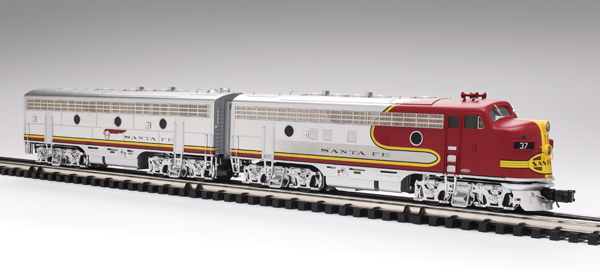
Such is the curse, or delight, of the cab unit body. You may think you have an F3, but when you check a roster, you’re delighted to discover you have a photo of an F7 to check off on what bird watchers call a “life list.” What a great hobby!
Well, the F7s were the best-selling cab units sold by General Motors, and they seemed to be everywhere. Between 1949 and 1953, the Electro-Motive Division of GM built almost 4,000 A and B units. Some of the fleets of As and Bs were sizable, such as the Baltimore & Ohio’s 257, the New York Central’s 294, the Santa Fe’s 462, and the Southern Pacific’s 470.
The 1,500-horsepower F7 replaced the F3 in EMD’s catalog, and it was replaced by the F9. The models were reliable, as were most EMD products of the time, but the better visibility and maintenance access provided by the road switcher body design of the GP7/9, GP20s, and later GP38s ushered them from the scene. There are approximately 50 surviving F7s (not counting the FP7 variation) that range from museum display pieces to operating power.
Opening the box
In all of model railroading the most famous livery is the Santa Fe’s red warbonnet scheme. Everyone (myself included with an N scale F7 from Aurora) probably had at least one at some point in his or her time in the hobby. This is a tough graphic design to live up to. Let me assure you that Atlas O’s rendition is absolutely beautiful.
Unwrapping the O gauge diesel, the silver and red catch your eye even before the model’s curves. It offers a sense of motion, while the red, yellow, and black create a border arcing around the cab and flowing to the rear. The silver is brilliant in color, and it is sad that in countless black-and-white photos of this paint scheme, it comes off looking bland. Of special note is the mix of silver paint on the body, and a stainless-steel finish on the lower portion behind the words Santa Fe. Classy indeed.
The pilot has a superb design, highlighted by a smooth plow and unique uncoupler arms aiming down toward the coupler. The nose says it all: yellow grab irons in the center, a headlight, and a flashing beacon (surprise, the top lamp is the beacon). I love the large number boards versus the smaller styles later used by many railroads. They add points for texture, and you can see the numbers better. Just above them are the class lights.
The curving arc of the nose is perfect and is smooth to the touch. The front windows have wiper arms. The cab has add-on handrails and nicely executed kickplates on the steps. There are crewmen inside the cab and add-on horns on top.
The roof has a dynamic brake fan behind the cab and four cooling fans over the middle of the carbody. There are two exhaust stacks nestled amid the fans. There are 10 add-on lift rings, allowing maintenance access.
The roof profile of the B unit is the same, except that it mounts an exhaust for a steam heat generator for passenger service (no. 37 and company were built as dual-service engines, while other Santa Fe F7s were not).
The sides of the A unit have two portholes and four sets of horizontal louvers. The add-on screens are finely etched, and the chrome panels just above the bottom black/red/yellow/black stripe look superb.
There are doors above the front and rear trucks and a hostler station at the rear. There are add-on steps and grab irons at all these stations. The rear has a diaphragm, a doorway, and air-brake and multiple-unit cables.
The B unit has three portholes, four side doors, and four brakeman positions on the corners. The steam generator is mounted on the B.
Some hobbyists dislike the height of the fuel tanks. I’m an agnostic on the subject. I’ve seen enough prototype photos of F3s and F7s that suggest the tank is just fine. Other modelers don’t see it the same way. If this detail may be a sale-stopping item for you, be sure to consider it before you buy the locomotive. Regardless, the Atlas O Santa Fe F7 is a beautiful model and a fine commemoration of the units that hauled the fabled Super Chief.
On the test track
We tested the locomotive with the Lionel Legacy system, operating in TMCC/CAB-1 mode. After loading a generic TMCC diesel module, we put the F7 through its paces.
Atlas O advertises 100 speed steps, and I can believe it. The locomotive was responsive to commands and operated smoothly in conjunction with the rotating speed knob in all speed ranges. The model was mechanically quiet.
The sound package is the standard EMD prime mover suite, and it responds to speed changes, acceleration, and stopping with audible precision. I especially enjoyed the revs of the prime movers.
Our command-mode low-speed average was 4 scale miles per hour, and the conventional-mode low speed was 9.9 scale miles per hour. Our high speed was 71 scale miles per hour, and I was worried it was going to go off the edge of the table! Drawbar pull was 1 pound, 6 ounces.
It was very satisfying to run this diesel. The warbonnet livery never looked better, and the model’s performance was solid. Check out the F7 at your Atlas O retailer.






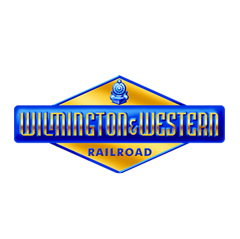
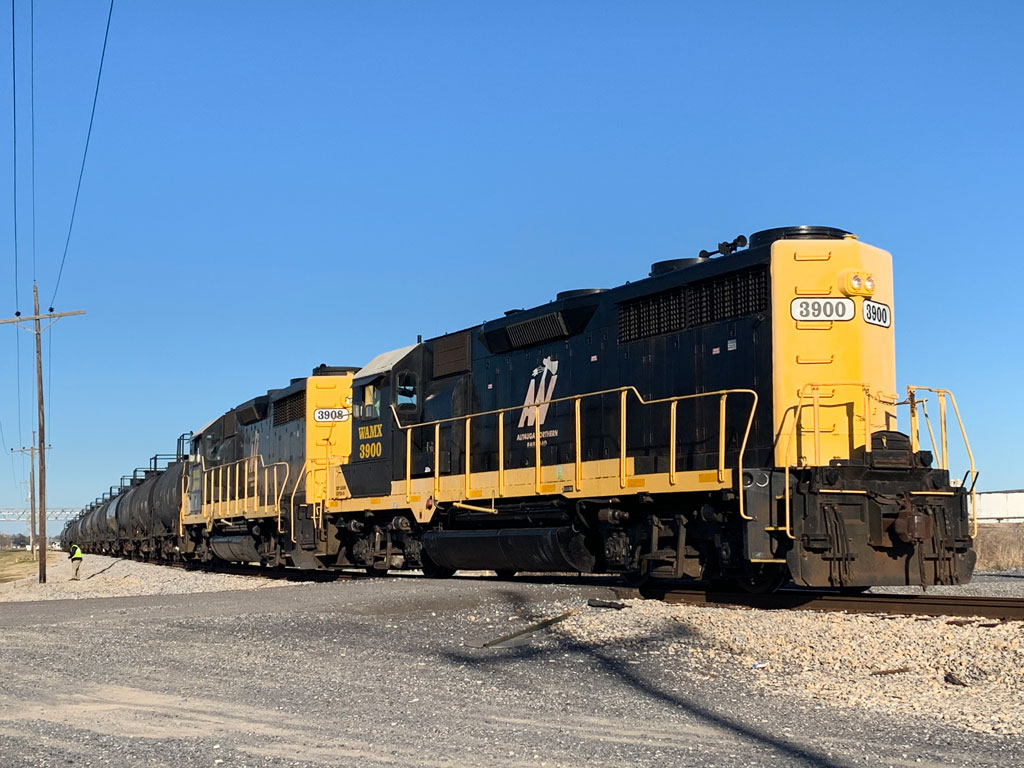
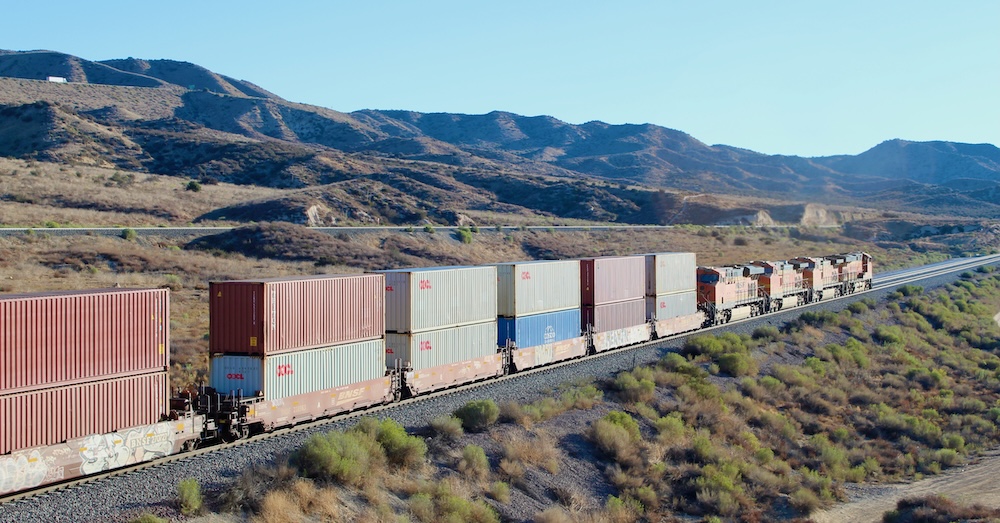
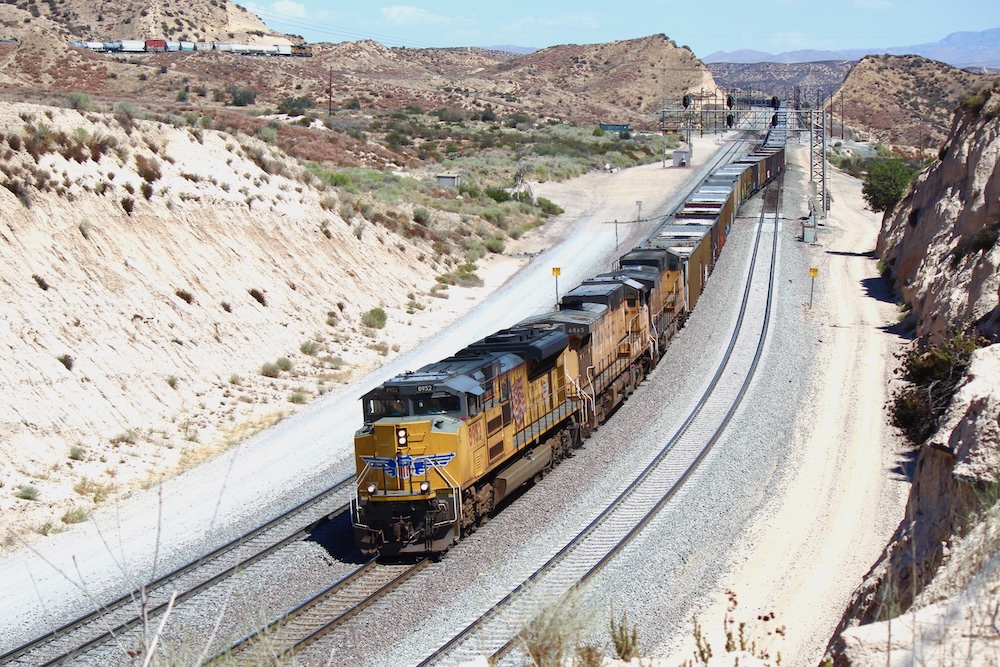




I also had the N scale F7 from Aurora Plastics. My uncle Joe managed the factory in Hempstead NY when I was a kid. My dad-Tony G was also involved. It was my first train set. Postage stamp trains. Now it’s Pre-war and Post-war Lionel. Wonderful hobby and fond memories.